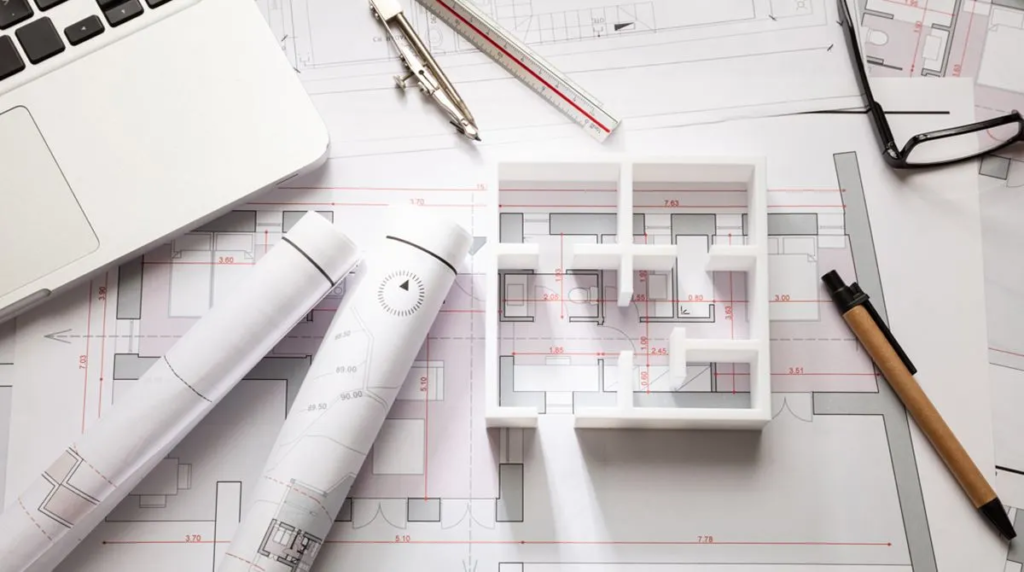The Financial Express
The construction industry is an ever-changing one with new technology and innovation being adopted every decade. 3D technology is one such innovation that has been advancing the field since the 1980s. Over the last decade, thorough research is being conducted with a focus on developing technology that will quicken the construction process with less reliance on labor.
With this technology, manufacturing of construction elements or entire buildings can be undertaken by means of a 3D printer printing concrete, polymer, metal, or other materials, layer-by-layer. Today the structures like houses or living spaces, offices, bridges, walls, security cabins, reinforcement moulds, columns, urban furniture and even decorative elements can be built at site.
The design process is key in making this technology work. A BIM program send a message to the 3D printer on what needs to be printed. Based on the information received, the machine begins to superimpose materials. You can customize the design to your needs and then commence the printing.
3D printers used for construction generally fall into two categories: gantry-style setups and robotic arms, with the gantry-style dominating the solution for on-site printing of entire building structures. The robotic arm automatically controls printer that allows freedom of movement and flexibility to schedule multiple tasks. This robotic arm enables printing from multiple viewpoints, so various geometric curves and angles can be included in the printing process. Also, large size printing is possible with the arm, something that other 3D printing methods don’t allow.
In comparison, the gantry system works with the contouring method. A nozzle thrusts out the required material to form the 3D model and form large-scale structures that have a smooth surface. Rails are placed to act as a guide for the robotic arm during the formation process. Other methods include Extrusion, commonly used for modelling, prototyping and production applications or Powder Bonding which uses powdered raw material as its main component.
Other methods include powder binding and additive welding. Power binding includes solidifying powder in a basin layer-by-layer to form the item. Additive welding is by done by printing a full-scale, functioning metal element. Specially designed nozzles are optimized to extrude concrete or mortar rapidly, using pre-programmed instructions to build these elements.
Also Read: How long does it take to build a credit score of 750 and above?
The push to build 3D printed structure has now become a worldwide endeavor, and as technology and resources further develop, this can become more cost-effective. It facilitates improved automation, speed, convenience and even sustainability due to controlled wastage.
Technology providers like COBOD and start-ups like Aeditive, AICT, Branch Technology, CEMEX Ventures etc. are rapidly changing the industry and replacing manual work, thereby resolving a number of challenges.
Typically, a 3D printed structure (for a residential project) can replace 30%~35% of the work stream. With the market still in its infancy, market size estimates for the industry are yet too premature to trust.
The large mismatch between demand and supply and general lack of skilled labour are some of the challenges that this technology can address; 3D printing technology can play a pivotal role in increasing productivity.
Organisations like PERI have worked extensively in improving productivity and turnaround time to deliver projects with very few skilled and trained personnel at site.
There are a number of emerging models that limit the use to the size of the structure, making size and development of these printers a challenge. Further, the material must have the capacity to extrude from the nozzle and maintain its shape quickly. So, often, lack of the right formula poses as a limitation in 3D printing. In addition, the open time becomes a challenge. Any delay in the process can cause the concrete to harden and hinder the work.
In India, Tvasta Manufacturing Solutions, a start-up founded by alumni of IIT Madras, has made what is believed to be India’s first 3D-printed house. L&T used COBOD’s printer to construct a two-story building in Tamil Nadu, Godrej Construction has collaborated with Tvasta to build a concrete 3D-printed bus shelter at its Mumbai plant. And the Indian Army now has a 3D Printed House Dwelling Unit at Ahmedabad, which is a disaster-resilient structure that complies with Zone-3 earthquake specifications and green building norms. Further, in another first, Bengaluru will have a 3D-printed post office to be constructed in Cambridge Layout in the Halasuru area.
The technology re-defines workflow sequence and can help achieve high client satisfaction. This process enables a three-dimensional body by overlaying material a layer at a time. This method of construction is very versatile and can help create complex structures or specific components of a project. 3D printing automates building processes using robotic solutions extruding concrete. Over the past five years, 3D construction printing has been making waves in the industry and is now being adopted widely.
(By Jatin Shah, Chief Technical Officer, India & Managing Director, Technical Due Diligence, Colliers)
Get live Share Market updates and latest India News and business news on Financial Express. Download Financial Express App for latest business news.

